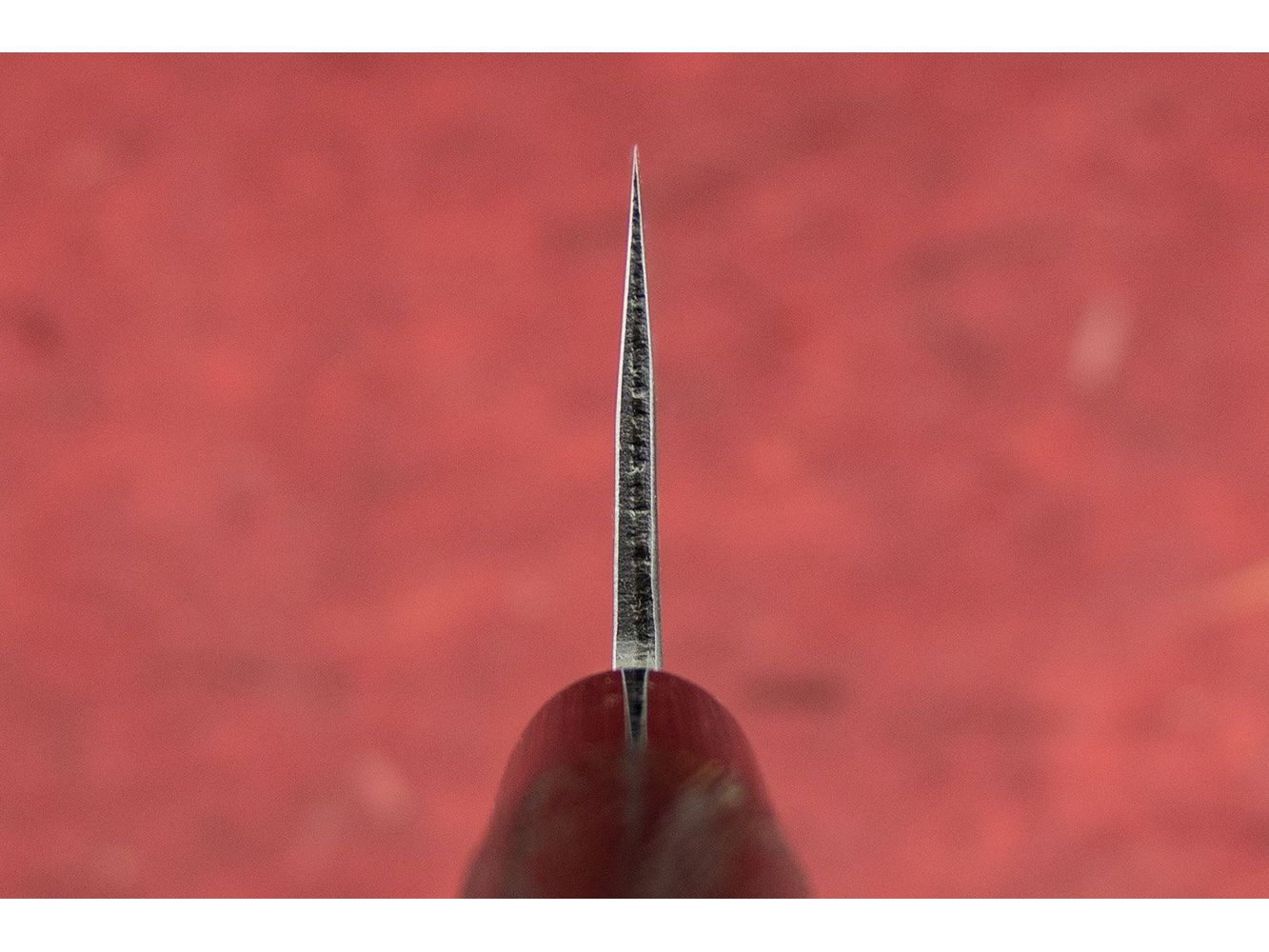Fujimoto Nashiji Santoku 165mm
Fujimoto Nashiji Santoku 165mm
Couldn't load pickup availability
These were the first Fujimoto blades we carried; to this day, they remain a staff and customer favourite. Here’s why: some Japanese blades are made with carbon steel, which gets crazy sharp but can rust, while others are made from stainless steel, which is easy to care for but doesn’t quite have the same magic. These are the best of both worlds, made with a super hard carbon steel core, protected by an outer layer of stainless steel, so only the edge requires maintenance! It’s a genius way of making a knife, and the ‘nashiji’ finish, inspired by the look and feel of Asian pear skin, takes it over the top.
Fujimoto blades are crafted by a team of expert craftspeople, and each step is hand-done by a specialist in their field to create a consistent, affordable, high-performance knife. Fujimoto knives sport a classic Japanese handle, called a ‘wa handle,’ that puts most of the knife’s weight in the blade.
About the shape - Santoku means 'Three Virtues' or 'To solve Three Problems'. The three virtues are meat, fish and vegetables, or slicing, dicing and mincing depending on your interpretation. This means that the Santoku is an all-around knife, suitable for the amateur home cook and the professional chef alike. The height means good clearance for big hands, while the relatively short blade can be wielded by anyone.
| Shape | Santoku |
|---|---|
| Blade Length | | |
| Blade Height | |
| Blade Thickness Above Heel | |
| Weight | |
| Steel Type |
Rust Prone ⓘ
This knife can rust, click to learn more.
|
| Rockwell Hardness | 62 - 63 |
| Edge/Bevel | |
| Handle | Wa (Japanese) Handle - Oval Burnt Chestnut Plastic Collar |
| Knifeline | Fujimoto Nashiji |
| Brand | Fujimoto |
| Made in | Tsubame-Sanjo, Niigata, Japan |
Knife Care
Knife Care
Shipping and Returns
Shipping and Returns
We aim to ship your order within 1 business day at Knifewear, if there is a hold up, we'll aim to let you know and give you a timeline.
We offer $3 shipping on orders over $100* anywhere in Canada and $200* to customers in the USA. We ship worldwide, and offer up to the minute rates from our shipping partner DHL.
*Konro Grills and some other larger items are excluded from the free shipping offer.
How do I make a return on an online order?
No worries, we've got you sorted. Head over to https://knifewear.com/returns and follow the prompts.
Can I pick up my order Curbside / At the store?
Absolutely, as long as all the items you are looking for are in stock at the location you want to pickup from, you'll be able to select that at the checkout. If one or more items aren't at your preferred location we are happy to ship it to you.
Request Additional Info
Request Additional Info







